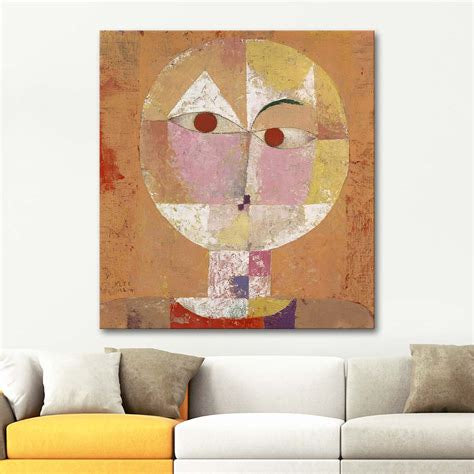
Paul Klee – Senecio (1922): Iconic Abstract Painting Blending Geometry and Symbolism
Paul Klee’s Senecio (1922) is a captivating example of how abstraction and figuration can blend seamlessly into a work that is both playful and deeply symbolic. The painting depicts a stylized human face, constructed from geometric shapes and warm color blocks, resembling a mask or mosaic. With its flattened perspective and simplified forms, Senecio embodies Klee’s ability to distill complex ideas into deceptively simple visual language.
Klee, who taught at the Bauhaus, was known for integrating elements of Cubism, Expressionism, and Surrealism into his work. In Senecio, his mastery of color theory is evident. The warm reds, oranges, and yellows are balanced with cooler whites and grays, creating a harmonious composition that invites prolonged contemplation. The fragmented style reflects Klee’s interest in breaking reality into its essential parts—lines, colors, and shapes—while still maintaining a sense of personality and emotion.
The title Senecio refers to a genus of plants, but the painting’s imagery suggests themes of wisdom, aging, and timelessness. The division of the face into distinct planes and colors may also hint at the different facets of identity. As with much of Klee’s work, interpretation is open-ended, encouraging viewers to project their own narratives and emotions onto the image.
Senecio stands as a testament to Klee’s unique position in modern art—bridging the gap between pure abstraction and representational imagery, and showing that even the simplest forms can carry profound meaning.
Join our latest collection
